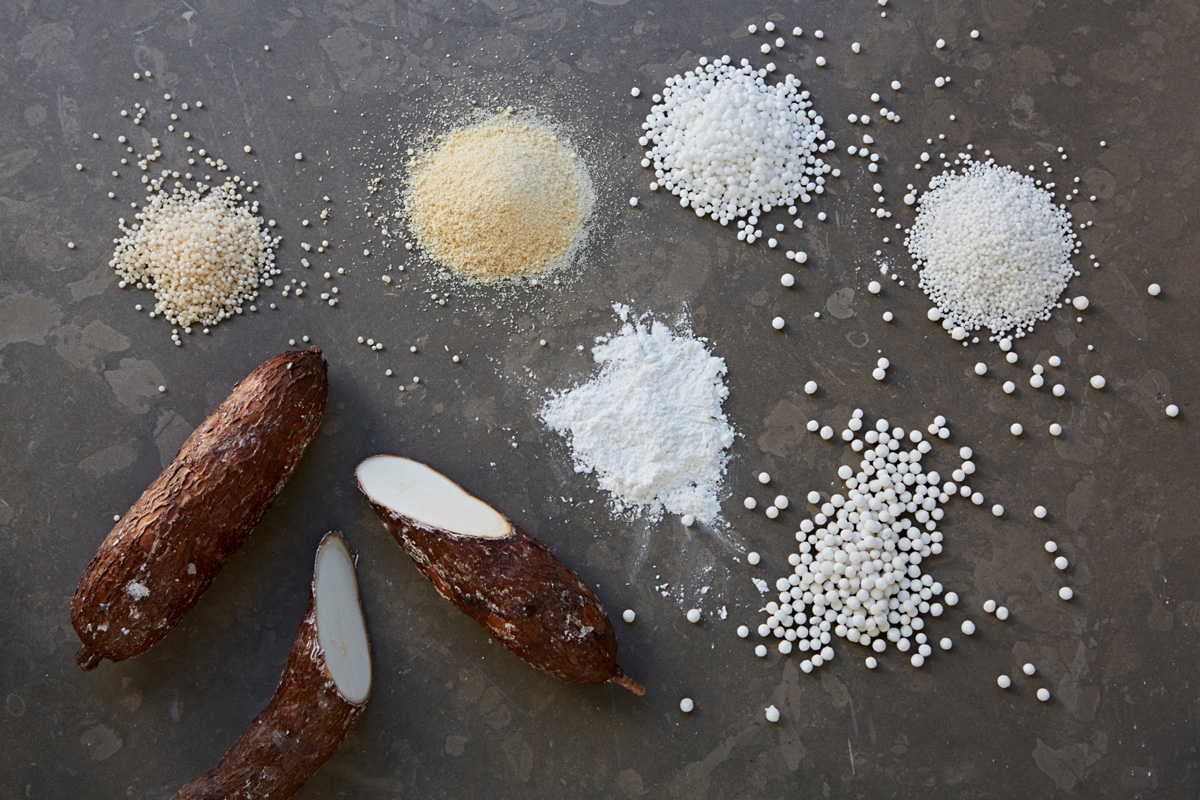
What Is Tapioca and What Is It Good For
Introduction:
Tapioca is a starchy substance that is derived from the cassava root, a plant native to South America. It has gained popularity as a versatile ingredient used in various culinary applications worldwide. Tapioca is commonly used in cooking and baking, offering a unique texture and mild flavor. In this comprehensive guide, we will explore what tapioca is, its nutritional composition, culinary uses, and potential health benefits.
Understanding Tapioca:
a. Cassava Root: Tapioca is made from the starchy tuberous roots of the cassava plant, scientifically known as Manihot esculenta. Cassava is a staple crop in many tropical regions and is cultivated for its high carbohydrate content.
b. Processing: To make tapioca, the cassava roots are harvested, peeled, grated, and then soaked in water to separate the starch from the fibers. The starch is then extracted, dried, and processed into various forms such as pearls, flakes, flour, or starch.
Nutritional Composition:
a. Carbohydrates: Tapioca is primarily composed of carbohydrates, making it a good source of energy. It is low in protein and fat, but the specific nutrient composition can vary depending on the processing method and form of tapioca.
b. Fiber: Tapioca contains minimal amounts of dietary fiber. However, the processing of tapioca may remove some of the natural fiber present in the cassava root.
c. Vitamins and Minerals: Tapioca is not particularly rich in vitamins or minerals. However, it does contain small amounts of minerals like calcium, iron, and potassium.
Culinary Uses:
a. Thickening Agent: Tapioca starch is commonly used as a thickening agent in soups, stews, sauces, and desserts. It forms a smooth and translucent gel-like texture when cooked.
b. Puddings and Desserts: Tapioca pearls are often used in desserts such as tapioca pudding, bubble tea, and fruit salads. The pearls are boiled until they become translucent and soft, resulting in a chewy texture.
c. Gluten-Free Alternative: Tapioca flour is a popular gluten-free alternative to wheat flour in baking. It can be used in recipes for cakes, bread, cookies, and pancakes, providing a light and airy texture.
d. Binder and Filler: Tapioca starch is often used as a binder and filler in various food products such as meatballs, sausages, and processed foods. It helps improve texture, moisture retention, and shelf life.
Potential Health Benefits:
a. Gluten-Free and Grain-Free: Tapioca is naturally gluten-free, making it a suitable option for individuals with gluten intolerance or celiac disease. It can be used as a substitute for wheat flour in gluten-free baking.
b. Easy to Digest: Tapioca is easily digestible and can be a gentle option for individuals with sensitive stomachs or those recovering from illness. Its soft and smooth texture is well-tolerated by many people.
c. Energy Source: The high carbohydrate content of tapioca makes it an excellent source of energy. It can be particularly beneficial for individuals engaging in high-intensity physical activities or those needing quick energy replenishment.
d. Allergen-Free: Tapioca is free from common allergens such as wheat, dairy, nuts, and soy, making it a safe choice for individuals with food allergies or sensitivities.
e. Resistant Starch: Some research suggests that tapioca may contain resistant starch, a type of fiber that can act as a prebiotic and support gut health by promoting the growth of beneficial gut bacteria.
Conclusion:
Tapioca is a versatile ingredient derived from the cassava root, offering a range of culinary possibilities. It is a carbohydrate-rich food that serves as a gluten-free alternative and can be used as a thickening agent, binder, or filler in various recipes. Tapioca is easily digestible, making it suitable for those with sensitive stomachs or dietary restrictions. While it is not particularly nutrient-dense, tapioca does provide energy and small amounts of minerals. Additionally, tapioca is allergen-free and may contain resistant starch, which can support gut health.
When incorporating tapioca into your diet, it is important to choose high-quality, unprocessed forms of tapioca, such as organic tapioca flour or pearls. Opting for organic varieties ensures that the cassava roots used to make tapioca have been cultivated without the use of harmful pesticides or chemicals. When cooking with tapioca, follow the recommended cooking instructions for the specific form you are using to achieve the desired texture and consistency.
It’s worth noting that while tapioca can be a part of a healthy diet, moderation is key. Due to its high carbohydrate content, excessive consumption of tapioca may contribute to weight gain or blood sugar imbalances, particularly in individuals with diabetes or insulin resistance. It is always best to consult with a healthcare professional or registered dietitian to determine the appropriate portion sizes and overall dietary balance based on your specific health needs and goals.In conclusion, tapioca is a versatile and widely used ingredient with various culinary applications. It can serve as a gluten-free thickening agent, binder, or filler in recipes, providing a unique texture and mild flavor. Tapioca is easily digestible, allergen-free, and can offer a source of energy. While it is not particularly nutrient-dense, tapioca can still be enjoyed as part of a balanced diet. Remember to consume tapioca in moderation and consider its impact on your overall dietary needs and health goals.
Ksenia owns her own dermatology clinic in London and is a nutritionist consultant. Ksenia is also a regular contributor to popular media outlets. In her spare time, she enjoys horse riding, clay pigeon shooting, rummaging in vintage stores and countryside walks.
[email protected]
- The Benefits of Chlorophyll - April 9, 2024
- Cappuccino vs. Latte vs. Macchiato – What’s the Difference? - April 9, 2024
- The Comprehensive Guide to the Benefits of Iron - October 16, 2023


